Pubs have long been icons of social culture, their origins tracing back centuries to gather spots for community and camaraderie. Over time, these establishments have undergone remarkable transformations, evolving from humble taverns to sophisticated spaces that reflect the changing tastes and trends of society. The evolution of pub decor is a fascinating journey, mirroring broader cultural shifts while maintaining a unique charm that resonates with patrons across generations.
Key Takeaways
– Cultural and Historical Evolution: Pub decor has transformed over centuries, reflecting societal changes and cultural influences.
– Ancient Times: Early pubs were simple, functional spaces with minimal decor.
– Medieval Period: Inns featured heavy wooden beams, stone floors, and fireplaces, emphasizing warmth and camaraderie.
– Industrial Revolution: Pubs became more sophisticated with ornate woodwork, stained glass, and intricate tile work.
– Prohibition Era: Speakeasies emerged with clandestine, artistic decor, marking a shift in pub design.
– Post-WWII to 1980s: Pubs embraced Deco-style motifs and retro furnishings, focusing on comfort and socializing.
– Modern Era: Contemporary pubs blend traditional elements with modern aesthetics, incorporating vibrant artwork and innovative lighting.
– Cultural Influences: Pubs reflect diverse cultural heritages, such as traditional Irish decor at the Dufferin Arms.
– Craft Beer Culture: The resurgence of craft beer has influenced decor with rustic, artisanal aesthetics like exposed brick and barrel tables.
– Technological Advancements: Modern pubs utilize LED lighting, sound systems, and digital displays for enhanced experiences.
– Globalization: International design trends, including minimalist Scandinavian styles, shape contemporary pub interiors.
– Functionality and Versatility: Pubs now adapt to various uses, from live music to corporate gatherings, with flexible seating and lighting.
– Sustainability: Eco-friendly practices and materials are increasingly integrated into pub design.
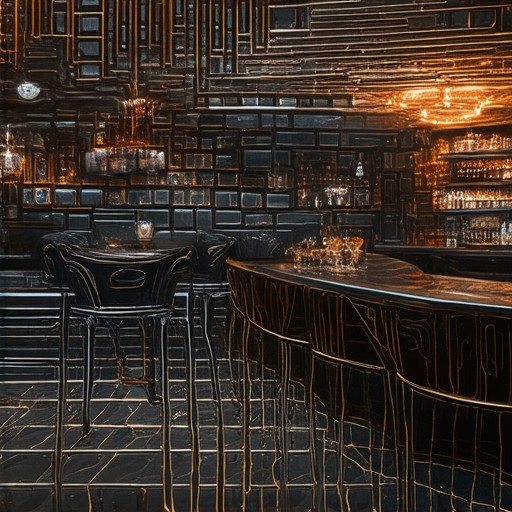
What is the Evolution of Pub Decor?
The evolution of pub decor reflects the changing tastes, cultural shifts, and societal values over centuries. From humble beginnings to becoming vibrant community hubs, pubs have evolved significantly in their design and ambiance.
Medieval Times
In the medieval era, pubs were simple establishments often housed in wooden buildings with heavy timbers and stone foundations. The interiors featured rough-hewn wooden beams, open fireplaces, and basic furnishings. These early pubs served as gathering places for travelers and locals alike, offering shelter and refreshment.
Victorian Era
During the Victorian period, pubs became more elaborate, influenced by the Industrial Revolution and the rise of urbanization. Ornate architecture, stained glass windows, and intricate wood carvings became common. The interiors were adorned with heavy drapery, dark wood paneling, and decorative motifs reflecting the wealth and grandeur of the time.
Prohibition and Speakeasies
The Roaring Twenties and Prohibition era brought a dramatic shift with the rise of speakeasies. These underground bars were often hidden behind unassuming facades, featuring dim lighting, small seating areas, and a focus on privacy. Decorations were more modest, with a emphasis on functionality and secrecy.
Mid-Century Modern
Post-WWII, mid-century modern design influenced pub decor, emphasizing clean lines, minimalism, and geometric shapes. Pubs began to feature sleek furniture, bold color schemes, and an emphasis on functionality. This era saw the rise of retro-style pubs reminiscent of the 1950s and 60s.
Modern Era
Today, pub decor blends traditional and contemporary elements. Many pubs now showcase rustic industrial designs, exposed brick walls, and large, inviting bar areas. Modern pubs often incorporate elements like flat-screen TVs, stylish seating, and innovative lighting. The interiors reflect a balance between historical charm and modern comfort.
- Dufferin Arms offers a deep dive into pub history and design, showcasing how pubs have evolved over time. Visit Dufferin Arms to explore their extensive collection of pub-related content.
- The Pint highlights the art of pub culture, sharing insights into the evolution of pub decor. Check out The Pint for more in-depth articles.
- The Publican provides a global perspective on pub culture, including the latest trends in pub design. Visit The Publican to discover their expert analysis.
- The Drink Factory offers practical tips for pub owners and enthusiasts looking to modernize their spaces. Explore their resources at The Drink Factory .
Pub decor continues to evolve, reflecting the changing needs and preferences of society. Whether it’s a cozy traditional tavern or a sleek modern bar, pubs remain central to community life and cultural expression.
Key Elements Driving the Evolution of Pub Decor
The evolution of pub decor has been significantly influenced by several key factors, each contributing to the transformation of traditional pubs into modern, multifaceted social spaces. Here are the primary elements driving this change:
- Functional Adaptation : Pubs have evolved to better meet the needs of modern patrons. Features like improved seating arrangements, better lighting, and space-efficient layouts have made them more accessible and enjoyable. [Explore how pub designs have evolved over time](https://dufferinarms.com/pub-design-history)
- Aesthetic Innovation : Modern pub decor incorporates a variety of design styles, including industrial, rustic, and contemporary themes. Elements like exposed brick walls, vintage signage, and custom-built furniture contribute to a unique ambiance. [Discover popular pub design trends](https://dufferinarms.com/pub-decor-trends)
- Cultural Reflection : Pubs serve as mirrors of societal changes. From the prohibition era to the rise of craft beer, they adapt to reflect shifting cultural values and consumer preferences. [Learn about the cultural significance of pubs](https://dufferinarms.com/cultural-significance-pubs)
- Sustainability Efforts : Increasing environmental awareness has led pubs to adopt eco-friendly practices. Energy-efficient lighting, recycling programs, and seasonal decor made from sustainable materials are becoming common sights. [See how pubs embrace sustainability](https://dufferinarms.com/sustainable-pub-decor)
- Technological Integration : Modern pubs integrate technology to enhance the guest experience. Smart lighting systems, immersive sound setups, and interactive menus are just a few examples of how tech is reshaping pub culture. [Explore tech innovations in pubs](https://dufferinarms.com/tech-in-pubs)
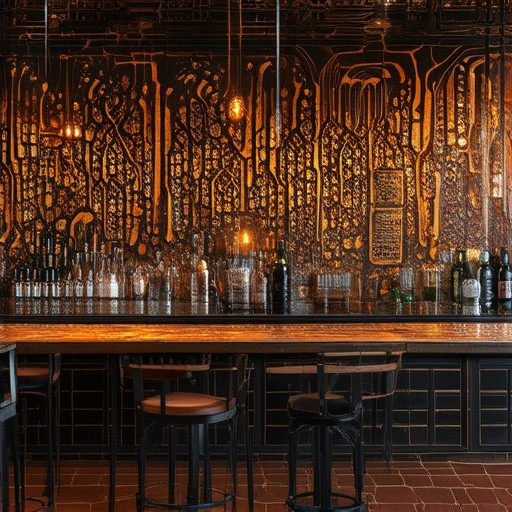
What Has Driven the Evolution of Pub Decor Over the Years?
The evolution of pub decor has been shaped by a variety of factors, including historical shifts, changing fashion trends, technological advancements, and societal changes. Here’s a breakdown of the key drivers:
- Historical Shifts : Pubs have evolved from simple drinking establishments to vibrant social hubs. The rise of the gastropub concept in the late 20th century, combining food and drink, has been a significant driver.
- Fashion Trends : Designers and architects have influenced pub aesthetics over the decades. Mid-century modern designs dominated the 1950s and 1960s, while postmodernism emerged in the 1980s and 1990s, bringing bold colors and eclectic furniture.
- Social Dynamics : Pubs have become more inclusive spaces, reflecting changes in gender roles and community values. Today, they cater to diverse demographics, from families to young professionals.
- Technological Advancements : The rise of the internet and mobile devices has transformed how people socialize. Many pubs now feature Wi-Fi, large screens for sports, and streaming services, turning them into modern social media hotspots.
- Globalization : The influx of international cuisines and brewing techniques has inspired fusion menus and exotic beer selections, broadening the offerings of pubs worldwide.
- Eco-Consciousness : There’s a growing trend toward sustainability in the hospitality industry. Many pubs now incorporate recycled materials and eco-friendly practices into their decor and operations.
- Safety Standards : Modern pubs have implemented stricter safety measures, such as ID scanning and improved security protocols, to protect patrons and maintain a safe environment.
These factors collectively contribute to the dynamic nature of pub decor, ensuring that pubs remain relevant and appealing to evolving tastes and needs.
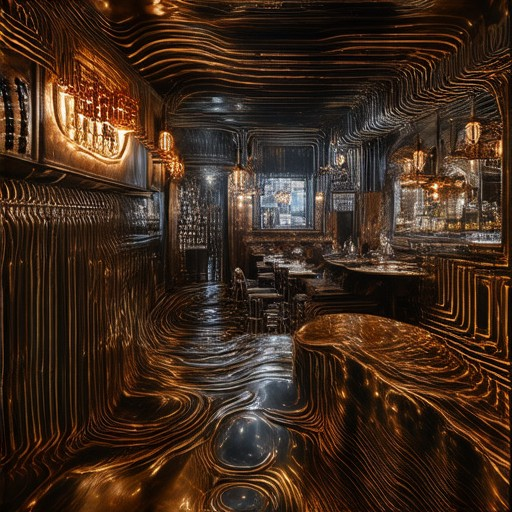
The Evolution of Pub Decor Through Cultural and Historical Changes
Pubs have long served as vibrant hubs of social interaction, reflecting the cultural and historical contexts of their times. Over centuries, pub decor has transformed from simple, functional spaces to elaborate, culturally rich environments. This evolution mirrors broader societal changes, blending aesthetics, craftsmanship, and community values.
- Ancient Times: Early pubs were modest affairs, often little more than communal drinking halls. Decor was basic, focusing on utility rather than style.
- Medieval Period: Inns and taverns during the Middle Ages featured heavy wooden beams, stone floors, and large fireplaces. These were functional spaces designed for warmth and camaraderie.
- Industrial Revolution: The rise of industrialization brought urbanization and wealth, leading to more sophisticated pubs. Decorations became more elaborate, with ornate woodwork, stained glass, and intricate tile work.
- Prohibition Era: During the early 20th century, Prohibition in the U.S. forced pubs to close, but speakeasies emerged with clandestine, artistic decor.
- Post-WWII to 1980s: After World War II, pubs began to reemerge with a focus on comfort and socializing. Deco-style motifs and retro furnishings became popular.
- Modern Era: Today, pub decor ranges from historic preservation to contemporary designs. Many pubs now blend traditional elements with modern aesthetics, offering a mix of cozy booths, vibrant artwork, and innovative lighting.
Cultural influences have also played a significant role in shaping pub decor. For instance, the Dufferin Arms in Ireland showcases traditional Irish decor, featuring Celtic knotwork and vintage photographs of local landmarks. Similarly, American pubs may incorporate industrial-era motifs or Art Nouveau designs, reflecting their unique cultural heritage.
Historical changes have further impacted pub design. The resurgence of craft beer culture has led to a focus on rustic, artisanal aesthetics, with exposed brick walls, barrel tables, and locally sourced artifacts. This trend is evident in pubs like The Pint in Melbourne, Australia, which emphasizes a return to simpler, more authentic pub experiences.
Overall, the evolution of pub decor is a testament to the enduring appeal of these establishments. By adapting to cultural shifts and preserving historical elements, pubs continue to remain relevant and cherished spaces for social gatherings and storytelling.
How Has Pub Decor Evolved Over the Years?
Pub decor has undergone significant transformations over the decades, reflecting shifts in cultural preferences and societal values. Here’s a journey through the evolution of pub design:
- Traditional British Pub (Pre-1980s): Characterized by cozy, rustic settings with dark wood paneling, heavy beams, and stone fireplaces. The atmosphere was warm and inviting, often featuring traditional pub signs and communal seating arrangements.
- Trendy Urban Pubs (1980s-1990s): Pubs began embracing a more contemporary aesthetic with exposed brick walls, large open spaces, and vibrant interiors. Stained glass windows and etched signs became popular, along with a focus on creating a lively social scene.
- Modern Industrial Design (2000s): This era introduced sleek, minimalist designs with metal accents, high ceilings, and large windows. Pubs transformed into spaces ideal for socializing, often featuring bold color schemes and industrial-inspired furniture.
- Blending History and Innovation (Present Day): Contemporary pubs now seamlessly integrate historical elements with cutting-edge design. Retro-inspired themes, neon lights, and vintage-style lighting create unique atmospheres. Many pubs focus on ambient lighting and comfortable seating to enhance guest experience.
Today’s pubs also incorporate technology, such as large screens for sports or live entertainment, and offer amenities like free Wi-Fi and charging stations. The menu has evolved to include more gourmet options, further elevating the upscale nature of modern pubs.
This evolution reflects broader societal changes, with pubs now serving as versatile spaces for socializing, dining, and even working. As competition among establishments grows, innovation in pub decor continues to drive dynamic and varied design choices.
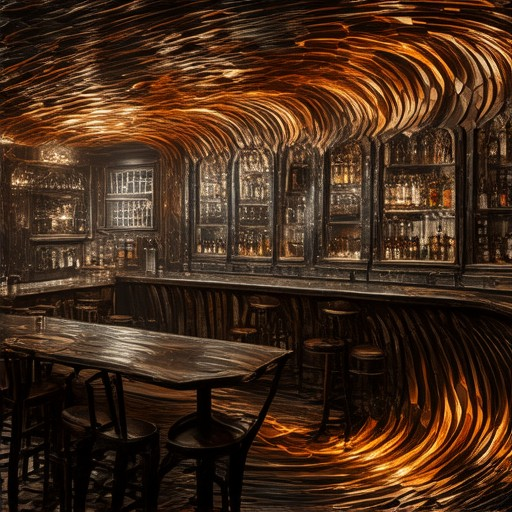
What Factors Have Contributed to the Evolution of Pub Decor?
The evolution of pub decor has been influenced by several key factors over the years, reflecting changes in society, technology, and design trends. Here are the primary contributors:
Cultural Shifts
Pubs have long served as community hubs, evolving from simple drinking establishments to vibrant social spaces. The rise of diverse cultures has led to a wider variety of pub designs, catering to different tastes and purposes. For instance, modern pubs now often feature spaces for live music, gaming, and casual dining, transforming them into multifunctional venues.
Technological Advancements
Modern technologies like LED lighting, sound systems, and digital displays have revolutionized pub experiences. These innovations allow for immersive entertainment options, creating a more dynamic atmosphere. Additionally, advancements in building materials and construction techniques have enabled architects to design more sustainable and visually striking pub interiors.
Influence of Global Design Trends
Globalization has brought international design influences to pub decor. Styles from around the world, such as minimalist Scandinavian designs, rustic European aesthetics, and tropical island themes, are now popular in pubs worldwide. This global exchange has resulted in a diverse range of pub designs that cater to different aesthetic preferences.
Functional Changes
Modern pubs prioritize functionality and versatility. Designers now focus on creating spaces that can adapt to various events, from sports watch parties to corporate gatherings. Flexible seating arrangements, modular furniture, and adjustable lighting are just a few examples of how pubs have become more accommodating to diverse needs.
Sustainability and Eco-Friendly Practices
There is a growing emphasis on sustainability in pub decor. Many pubs now incorporate eco-friendly materials, energy-efficient appliances, and waste reduction strategies into their design. This shift reflects broader environmental concerns and aligns with efforts to reduce the carbon footprint of hospitality businesses.
These factors have collectively shaped the evolution of pub decor, resulting in innovative and adaptable spaces that cater to a wide range of uses and customer preferences. Whether you’re looking for a traditional pub experience or something completely modern, there’s a design to suit every taste.
Dufferin Arms Blog: Explore the History and Culture of Pubs
Discover the rich history and unique charm of pubs through our detailed articles and insights. Learn about the evolution of pub decor and the stories behind iconic designs.
Visit Dufferin Arms Blog

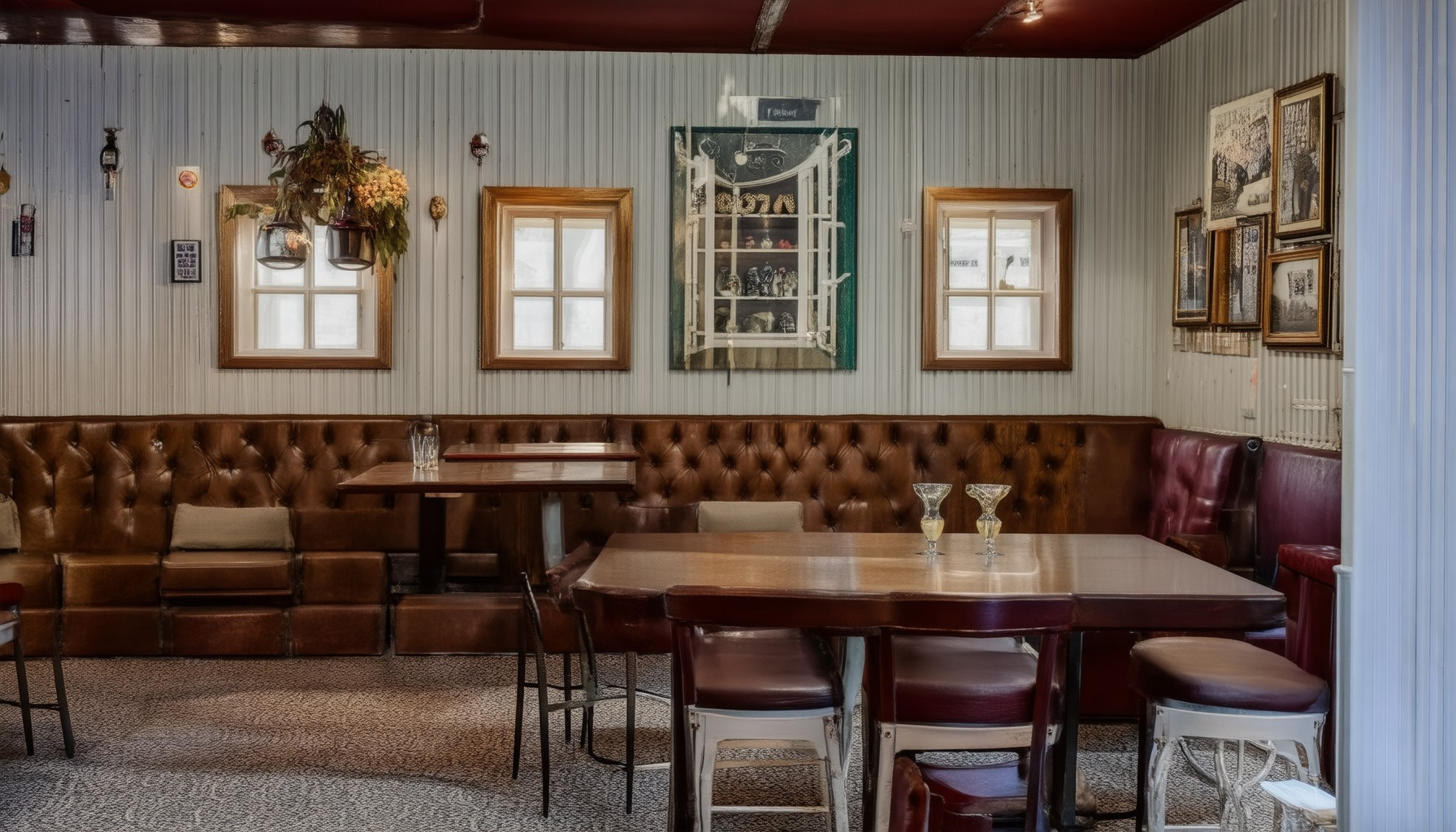
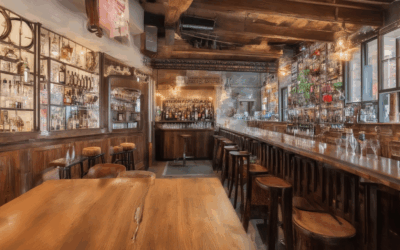
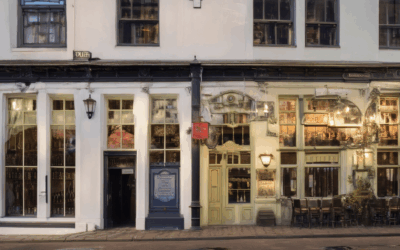
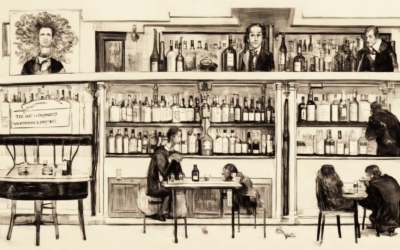
0 Comments